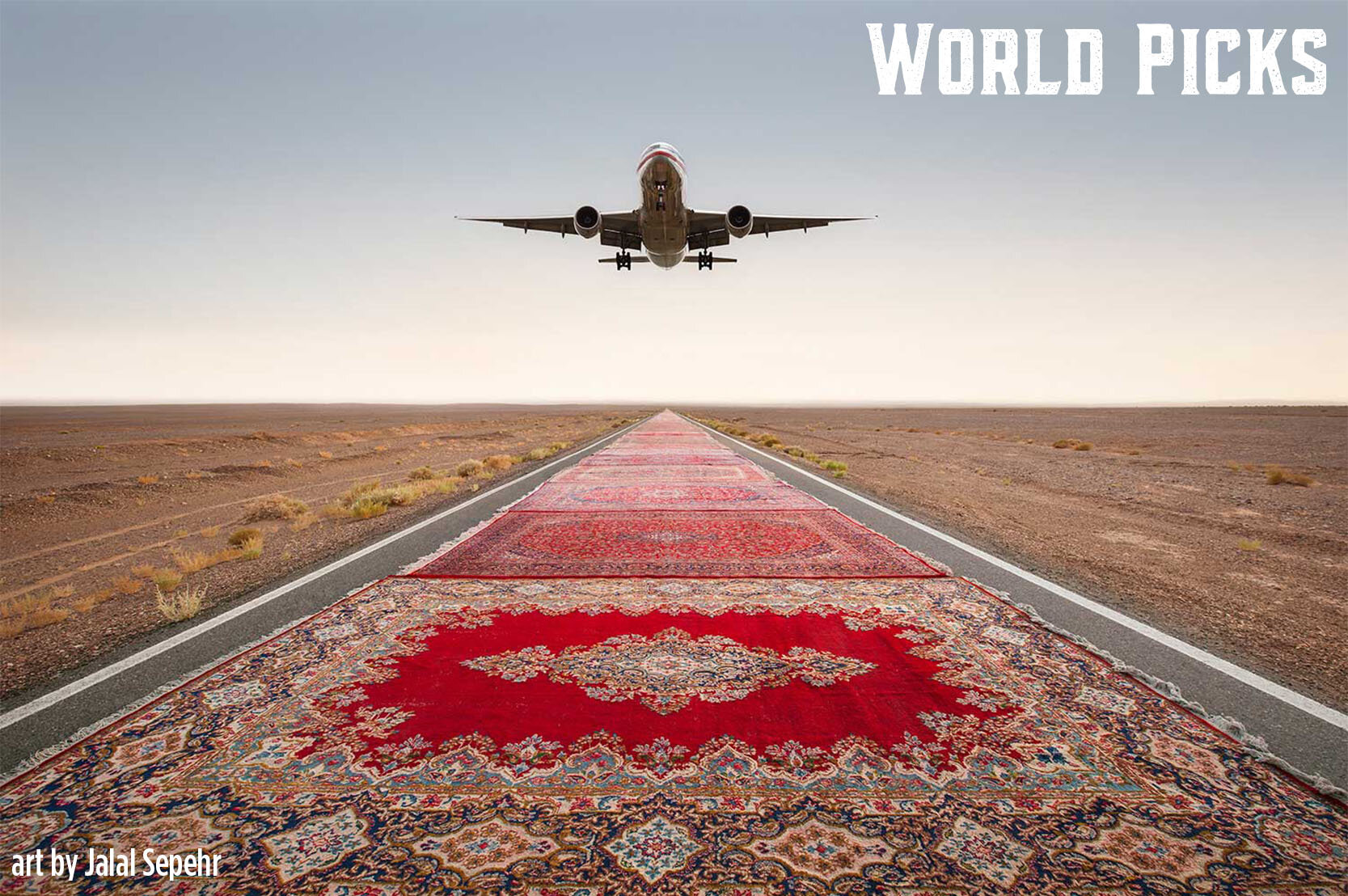
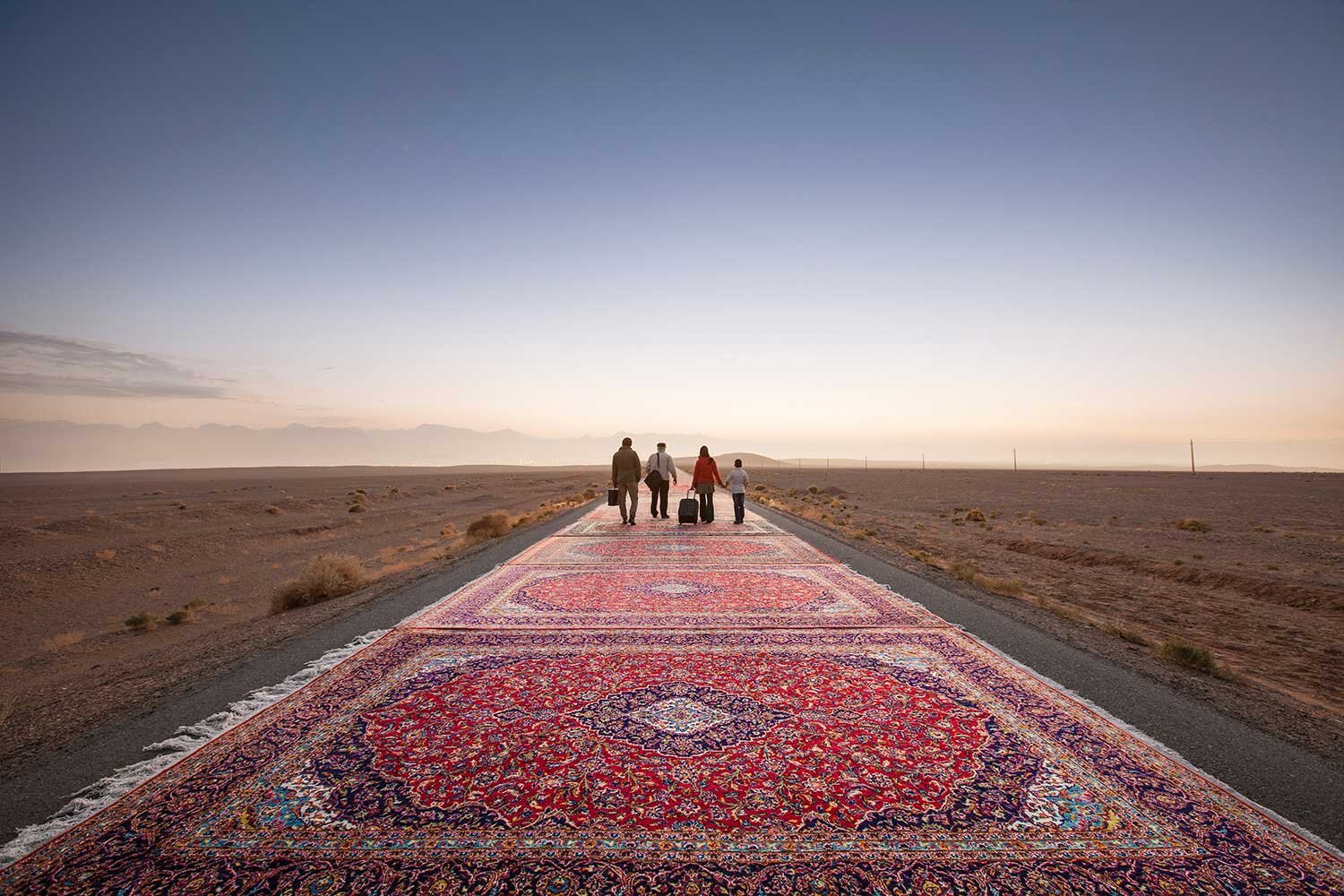
Got an event, book, film, conference or anything else you’d like to recommend? Drop us a line. All listings are online, unless otherwise noted.
Beirut Narratives, Solidifying Our Collective Consciousness • Selections Arts Magazine
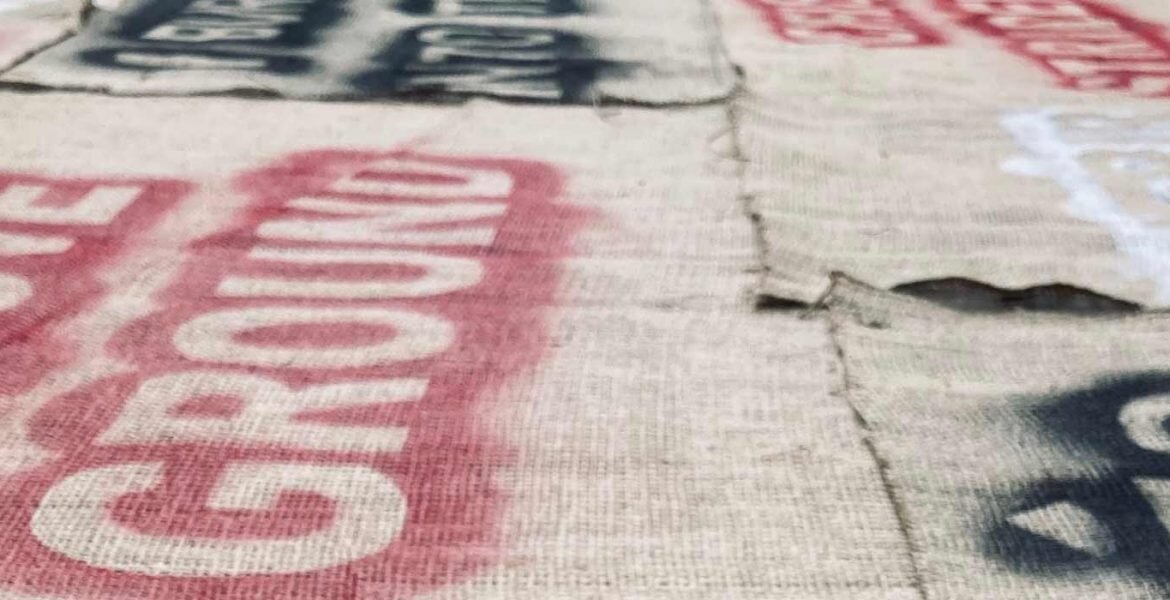
Céline and Tatiana Stephan, co-founders of Architecture | Mecanismes | Projects | Lebanon have launched a challenging project that reacts to last year’s horrific port explosion in Beirut. The Stephan sisters saw the resultant human and material damage as symbolizing the lamentable political and economic state of their native Lebanon.
Just 20 days after the 4 August 2020 blast, they began gathering photographs, children’s drawings, and testimonials written in English, Arabic and French by ordinary civilian witnesses. They then printed the words on canvases and began draping them over buildings near the disaster site, such as Karantina police station, the Elie Khoury Building, and the Mar Tower in Mar Elias. Tellingly, these “tapestries” are stitched together using fishing line plastic wire, the same material that healthcare workers use to bind people’s wounds. The first public displays went up this May, and Beirutis are encouraged to add new elements to the burgeoning venture. Later the organizers hope the artwork will travel beyond Lebanon.
Gulf Arab Artists Are Ready for You to See Their Work | Art & Object (artandobject.com)
A new showcase for Gulf Arab artists
A pool of creativity championed by Seka magazine and Khaleeji Art Museum
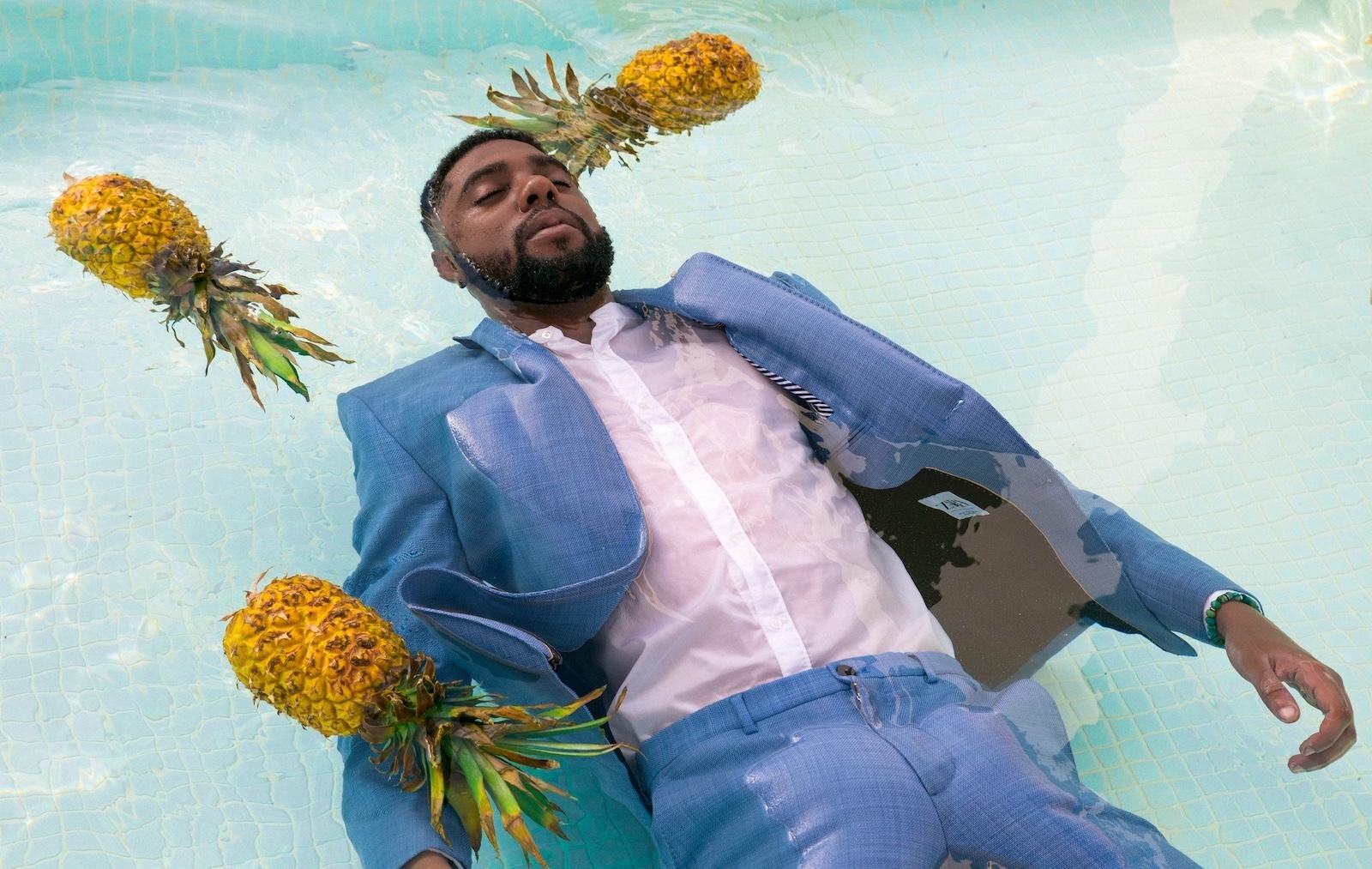
Frustrated by the barring of all but the most recognized names from appearing in established Gulf art galleries, four years ago Seka Magazine began digitally sharing work by hitherto neglected creative talents. The youth-led arts and culture publication and platform Seka has since run numerous exhibitions via their pioneering digital Khaleeji Art Museum.
Seka’s co-founder and “storyteller-in-chief”, Manar Al Hinai, places special emphasis on addressing socially charged topics and promoting work by women. She has attracted to her stable artists such as the late painter Zakia Al Dubaikhi (Saudi Arabia), Fatema Al Zari (Bahrain), pixel artist and animator Dana Al Rashid (Kuwait) and Huda Jamal (Bahrain). Also included are photographer Mahmood Al Zadjali (Oman), digital artist Mujahid Al Malki (Oman) and graphic designer Khalid Al Refaie (Kuwait). Past exhibitions have covered subjects such as sexual harassment and reactions to the Covid crisis. Most recently, Seka has presented “Summer in the Gulf” in Dubai Festival City. It features six Gulf artists and is reputedly “the world’s largest permanent outdoor projection.”
Meet the Arab Women of Determination Celebrating Body Positivity (vogue.me)
Inspiration from Arab women who survive trauma
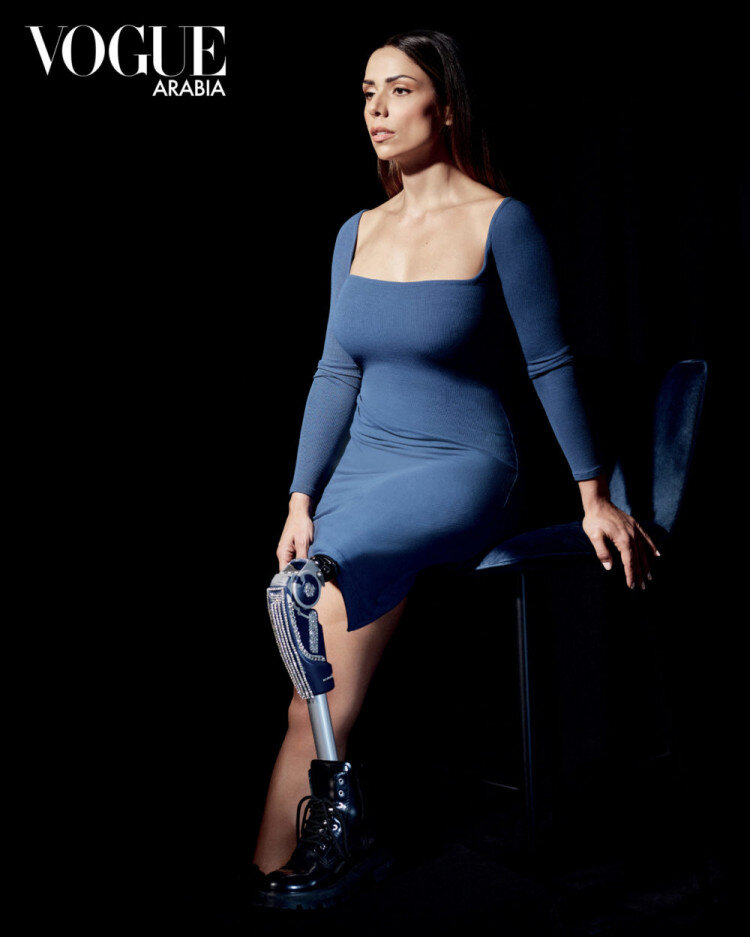
Vogue Arabia recently ran a moving feature on three women from Arab countries who all lost a leg yet triumphed over their adversity. The way Rania Hammad from Egypt, Alaïa Zainab Al Eqabi from Iraq and Dareen Barbar from Lebanon tell their stories should inspire us all.
Dareen, for instance, suffered her fate through cancer at 15; yet recently won a Guinness world record for the longest static wall sit for a female amputee. Rania barely survived a train crash in London when pregnant; only to use that harrowing experience to launch a fashion career via Instagram. Meanwhile Zainab, a trained pharmacist, endured a bomb explosion yet now is now a TV presenter who runs triathlons and scuba-dives. She also promotes prosthetic limbs and champions women who have suffered both physical wounds and callous prejudices from an uncaring society. The feature shows all three wearing elegant fashions while proudly showing their false legs. To all women who lack confidence, Zainab says: “You matter. Love yourself for who you are and only ever change for yourself. Be brave and strong… because everyone is struggling in their own way”.
In similar vein, the current issue of Vogue Arabia showcases two striking essays under the rubric “A Year After the Beirut Explosion.”
The first has Lebanese photographer Tarek Moukkadem “telling survivors’ stories through their scars.” In the second, Lebanese designers and stars describe resilience after the 2020 blast.
East and West shall never meet? Not true – just look at Gothic cathedrals
Diana Darke, author of the award-winning book, Stealing from the Saracens: How Islamic Architecture Shaped Europe, presents her thesis in this appealingly accessible video:
She argues that medieval Crusaders, pilgrims, bishops and merchants returned from Damascus, Jerusalem, Baghdad, and Cairo, as well as Muslim Spain, Sicily, and Venice, with revolutionary architectural and artistic ideas. These include pointed arches, gracious arcades, ribbed vaults, stained glass and even heraldry. Muslim geometric masonic genius thus found new homes in such Gothic splendours as Canterbury, Chartres and Kings College, Cambridge. Her presentation is one of several hosted by the Emir Stein Centre, whose ethos is “promotion of empathy and understanding through cultural and religious literacy” – in particular, to counter ignorance about Islam and Muslims.
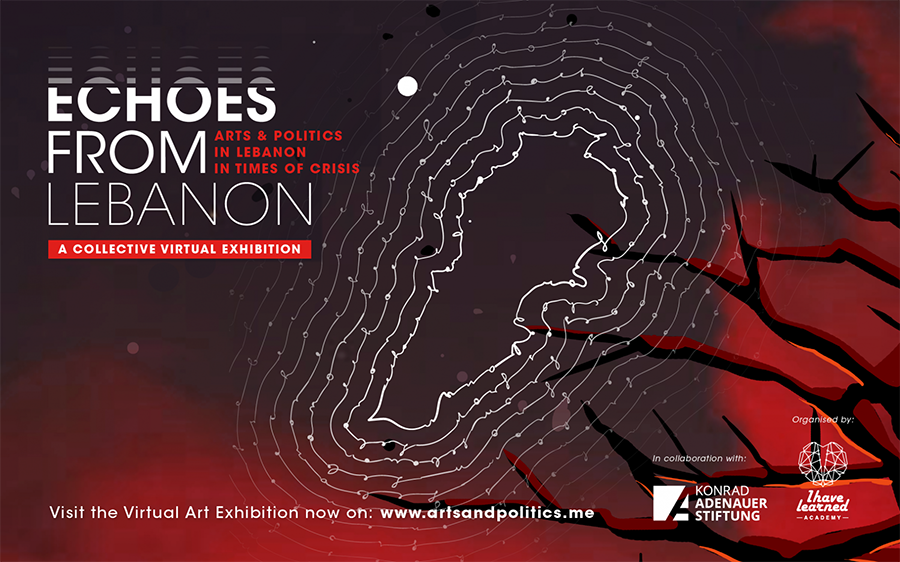
9 August – 30 December – Echoes from Lebanon: A Collective Virtual Exhibition
Finding beauty in the courage of Lebanese fighting against the odds…
Dozens of artists are participating in an ambitious online exhibition that addresses Lebanon’s multiple woes: corruption, economic collapse, political meltdown and the aftereffects of the August 2020 Beirut port blast. Instead of emulating the gloom, however, they seek “to sublimate the suffering by making something beautiful out of every situation,” writes the platform Lebtivity.
Backed by the I Have Learned Academy and the Konrad-Adenauer-Stiftung, Lebanon Office, the show is accessible through a fully interactive website here, where viewers can learn about each artist and artwork. They can also view more than two hours of videos; dip into side-vaults describing ground zero after the August explosion; or explore themes like Thawra (Revolution): the Lebanese Scream, and Lebanon’s Struggles.
Works include Sasha Haddad’s searing 2020 post-blast digital illustration that interposes shattered glass with doves and the word “Beirut” in Arabic. Others predate last year’s calamity, showing that Lebanon’s tragedy sadly has a longer pedigree. One such is the satirical graffiti of a moustachioed man in stocks, by Said F Mahmoud and Karim Tamerji from 2014, echoing an earlier crisis of governance, called “Change What The Elders Couldn’t.”
21 July – 10 October – Jarda at People’s History Museum in Manchester
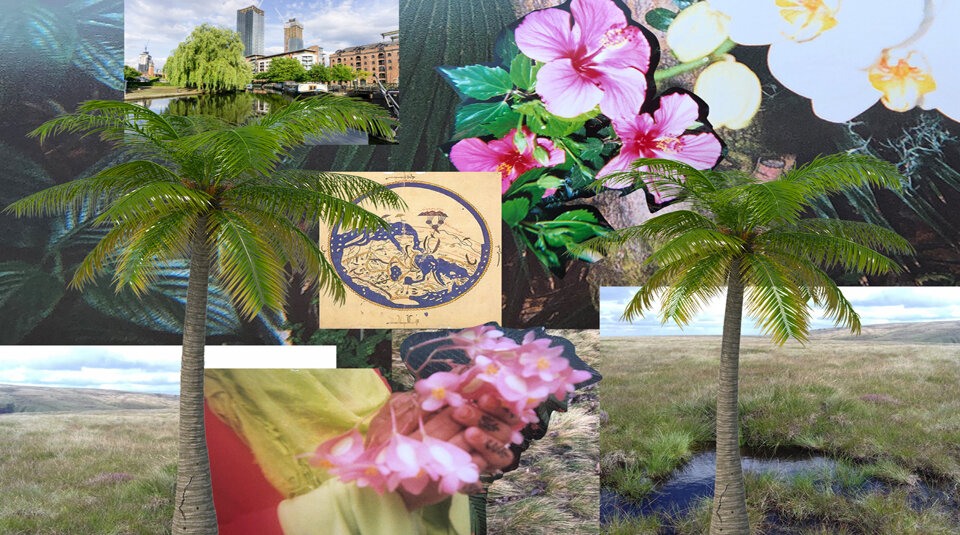
Nature and climate change through Arab eyes in Manchester
As floods and fires sweep the world this summer, few regions know the perils of climate change better than the Middle East. Fittingly the People’s History Museum’s is hosting a collective installation, Jarda, “an immersive walk in nature through Arab eyes.” Jarda is a Maghrebi Arabic term for garden and the English-Moroccan creative, Jessica El-Mal, is its curator and lead artist. Other artists include Maryam Alsaeid, Hibah Ali, Sanaa Sedaki, Hana Masaarane, Reem Alazemi and Soraya Agaoglu. The show forms part of the Arab British Centre’s Arab Britain program, which explores the history, achievements and experiences of Arabs in the UK, past and present. Jarda also offers a free digital pack of creative activities people can do from home based on the exhibition’s themes.
“After the year we’ve just had, this project and exhibition is the lightness we all need,” comments Jessica. Overlapping with Jarda is another installation by her, half an hour’s drive away, along the Mersey, and still viewable until 15 August as part of the Liverpool Arab Arts Festival. This one is called “Grounds for Concern” and consists of two giant collages critiquing man-made borders, and more particularly the border control regime that faces Maghrebi migrants trying to land in Gibraltar. The work is projected onto the outside wall of the Open Eye Gallery at Mann Island Atrium, Liverpool Waterfront.
19-29 August – Resistance, Rebellion and Revolution, at Hoxton 253, London
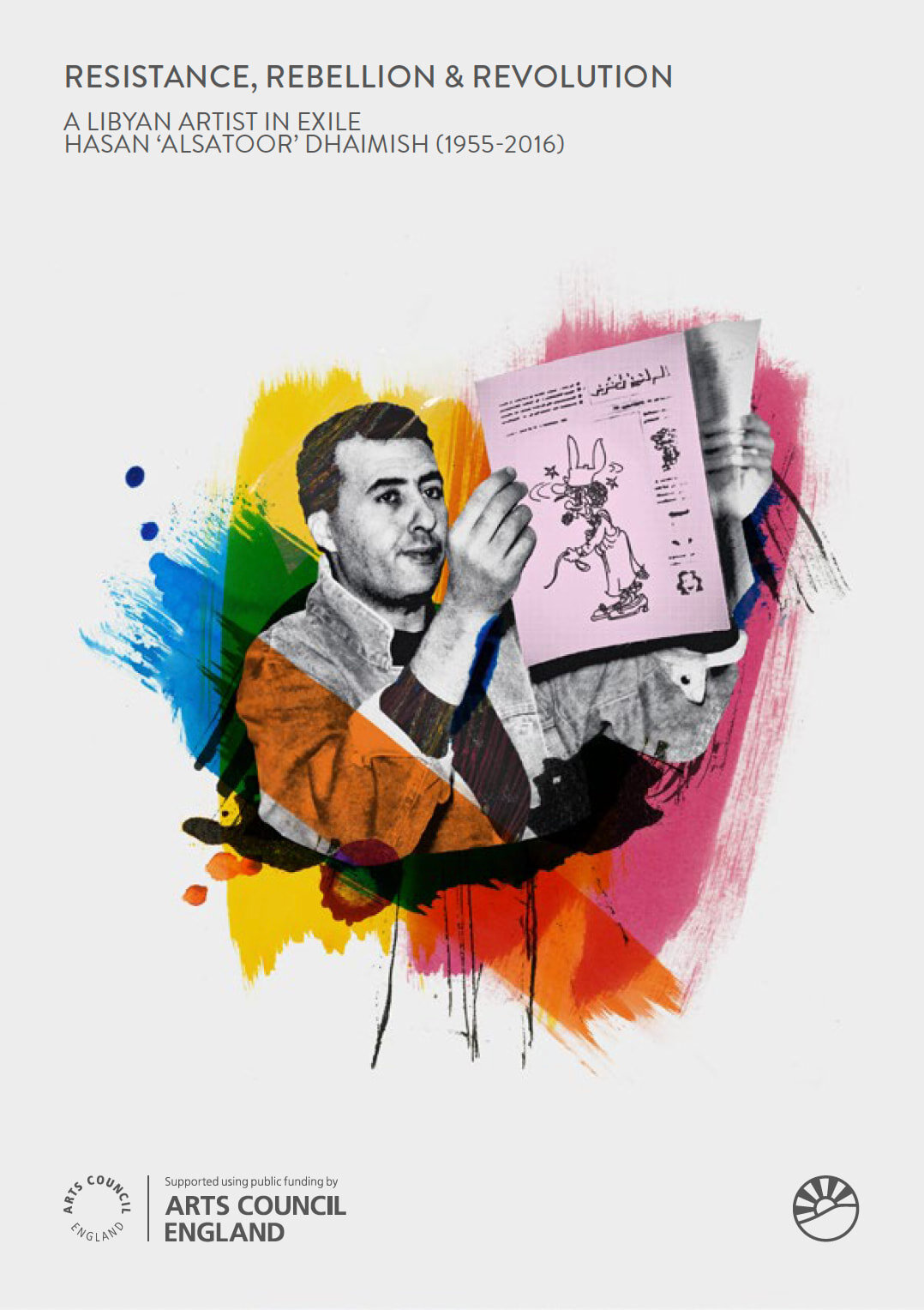
Celebrating the life of late Libyan artist and satirist, Hasan “Alsatoor” Dhaimish
Resistance, Rebellion & Revolution – HOXTON 253
Coinciding with the tenth anniversary of the uprising that overthrew Libyan dictator Muammar Ghadaffi, on 28 August Hoxton 253 gallery opens a two-week exhibition dedicated to the late Hasan Dhaimish (1955-2016). The satirical artist known as the cartoonist Alsatoor was notorious — and in certain quarters reviled — for his humorous though often brutally barbed and prescient images. Not for nothing was he dubbed Alsatoor — the Cleaver.
Yet Dhaimish had another side.
Since fleeing Libya in 1974, to settled in Lancashire, UK, he began creating gentler and more affectionate works inspired by his love of jazz and blues. The internet gave his political work a second wind, too, which no doubt influenced forces on the ground in his native Benghazi; though he must have regretted the civil war that followed the uprising of 2011. The east London show coincides with the publication of a limited edition book by his son, Sherif Dhaimish – Hasan ‘Alsatoor’ Dhaimish – A Libyan Artist in Exile (Pendle Press, 2021).
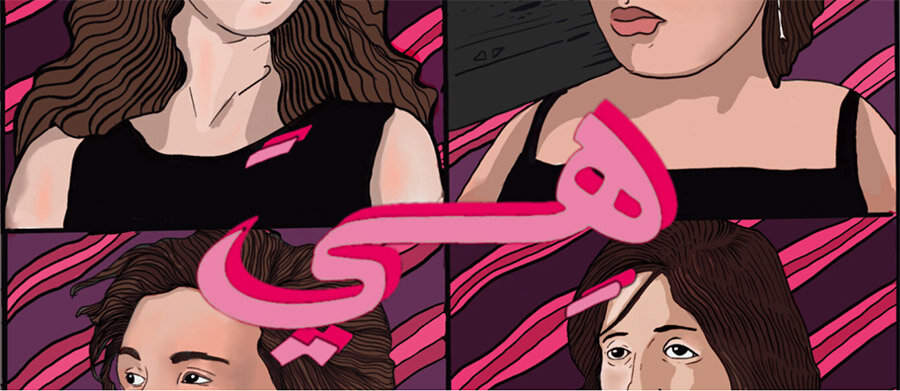
26 Aug 20:00-22:00 (CEST) هيHeya: Blue Spaces premiere and artist talk | Liverpool Arab Arts Festival
هيHeyais an experimental music project, which aims to act as a bridge for women making music in the Middle East. For Liverpool Arab Arts Festival 2021, membersNour Sokhon, Yara Mekawei, Zeynep Ayşe HatipoğluandJilliene Sellnerbring usBlue Spaces — a film event that raises questions about class, gender and colonialism and how they relate to the climate crisis.
Composed of voice, cello, sonic interventions, field recordings and video footage from Cairo, Beirut, Istanbul and Hastings,Blue Spacesis a stereo soundscape with an ethereal, fluid feel –existing in stark contrast to the realities of class, gender and the political and climate based traumas of the Middle East.
The climate crisis that the world now faces is largely down to industry and consumerism that is rooted in the Western world, yet a lack of responsibility for these realities still endures. The impact that this activity is now having across the Middle East falls mainly on the shoulders of women and the working class – themes that will be reflected in the sounds and visual work ofBlue Spaces.
September
2 Sept, 20:00 • Ahmad Fakroun, veteran Libyan singer, pioneer of modern Arab World Music at Jazz Café, Camden, London
Ahmed Fakroun (b. 1953) is a singer and songwriter from Benghazi, Libya and a pioneer of modern Arab world music who looked set to make his mark in world music circles in the mid-1980s when his album Mots D’Amour, combining traditional Arab melodies with electronic music, was released on the Celluloid label in France. But years of international sanctions impeded Libyan citizens’ freedom of movement and he spent long periods abroad in the ‘70s and ‘80s. In the last ten years he has come to prominence on the club scene when some of his early songs were rediscovered, re-edited and reissued anonymously by DJs and label owners.
John Storm Roberts of Original Music wrote that amongraïsingers, the pop-oriented Ahmed Fakroun stands out on two grounds. First, he is influenced byEuropopand Frenchart rock, not just the generalized rock of the others. Second, he’s a multi-instrumentalist in both traditions as well as a singer. He playsbouzouki-likesaz, mandol anddarboukadrum, as well as guitar, bass guitar and keyboards. Sometimes he seems overly crossover-oriented: but on form, his crossover deepens into telling biculturalism. Reserve your seats at London’s Jazz Café: AHMED FAKROUN Tickets | £14.85 | 2 Sep.
10 Sept 2021, 17:30 (CET) An evening homage for Lebanon, Institut du Monde Arabe, Paris
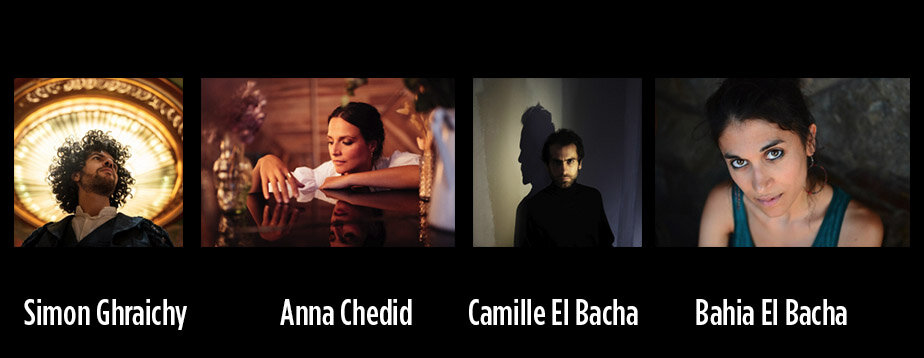
Lebanon is undergoing one of the worst economic, social and political crises in its history. The explosion in the port of Beirut on August 4, 2020, has brought the country to its knees. Renowned throughout the region for its flourishing cultural life, concerts, festivals, theaters, cinema and artists, Lebanon is seeing its role as a cultural beacon threatened as never before, despite the remarkable courage of its living forces.
Created in 1956, the Baalbek Festival has brought together artists from all over the world for more than sixty years in the heart of an exceptional archaeological site. Among those who have trodden the soil of the Roman City of the Sun are: Matthieu Chedid and the entire Chedid family, Jean-Michel Jarre, Ibrahim Maalouf, Carolyn Carlson, Ella Fitzgerald, Miles Davis, Oum Kalthoum, Fairuz, Deep Purple, the New York Philharmonic Orchestra, Maurice Béjart’s ballet, Rudolf Noureev, the Comédie française….
The last edition of the festival, “The Sound of Resilience” did not welcome people in person because of the health crisis. Today, there is a desire to keep the festival alive. On September 10, 2021, an exceptional concert will bring together lovers of Lebanon at the Institute du Monde Arabe, 1 Rue des Fossés Saint-Bernard, 75005 Paris, to resurrect the Festival. Under the leadership of pianist Simon Ghraichy, artists Anna Chedid, Bahia El Bacha, Camille El Bacha, Rana Gorgani and Jacopo Baboni-Schilingi will offer an extraordinary musical event.
Under the high patronage of François Hollande and the initiative Li Beirut of UNESCO, with the support of the Arab World Institute chaired by Jack Lang, this concert will raise funds that will ensure, despite the economic crisis, the holding of the Festival of Baalbek. It will be an opportunity to offer the Lebanese a moment of escape and to share an ideal of harmony, freedom and hope.
This unique show will be accompanied by a visit to the Arab World Institute’s exhibition “Divas: from Oum Kalthoum to Dalida” which will introduce you to the golden voices of Arab song.
RSVP here
Ends 19 September • The Drawing Center: Huguette Caland: Tête-à-Tête
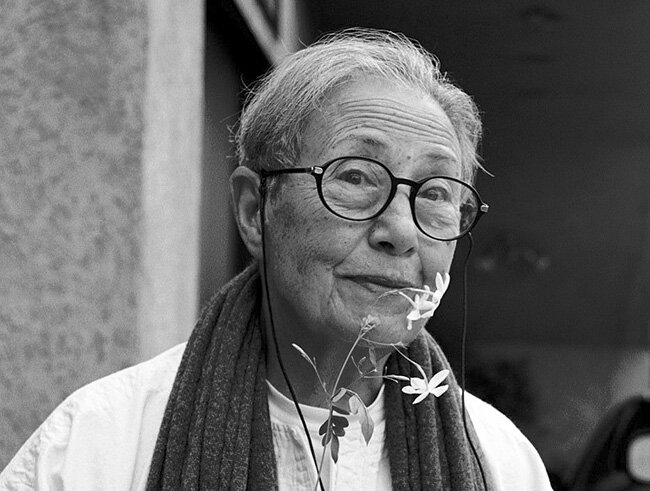
On view through September 19, 2021,Tête-à-Têtespans Lebanese artist Huguette Caland’s five-decade career and features over 100 works on paper and canvas, as well as caftans, sculptures, and notebooks on and in which she wielded her pen. Celebrating Caland’s unconventional and exuberant perspective on both life and art, the exhibition surveys how she used the medium of drawing throughout her career to challenge traditional representations of sexuality, the body, and desire.
At the age of thirty-three, Caland declared her intention to become an artist and enrolled in art courses at the American University of Beirut, where she created some of her earliest compositions…
“There’s plenty to say about Huguette Caland, on the occasion of “Huguette Caland: Tête-à-Tête” at the Drawing Center, a lovely (if too small) survey of her career, curated by Claire Gilman and Isabella Kapur.
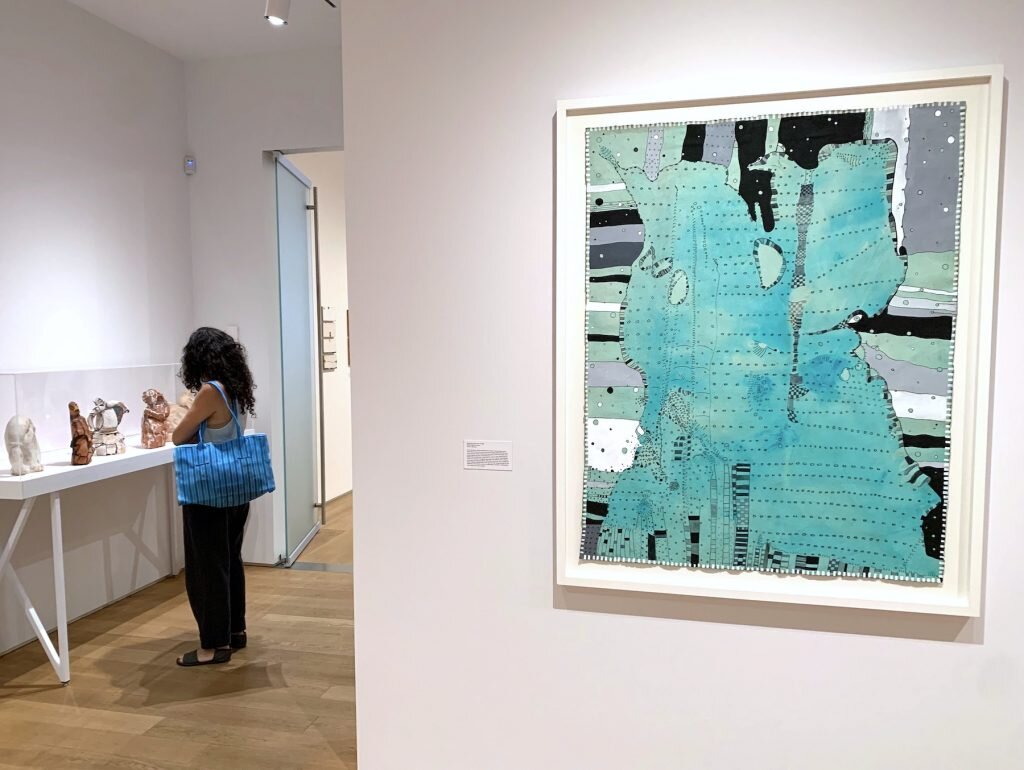
“Caland is an increasingly important figure in recent art history, her rise coinciding both with a surge of interest in overlooked women artists and the mounting political instability in her country of birth, Lebanon, which has put a spotlight on its history and culture.”
Read a comprehensive review of Huguette Caland’s life and work by Ben Davis in Artnet News.
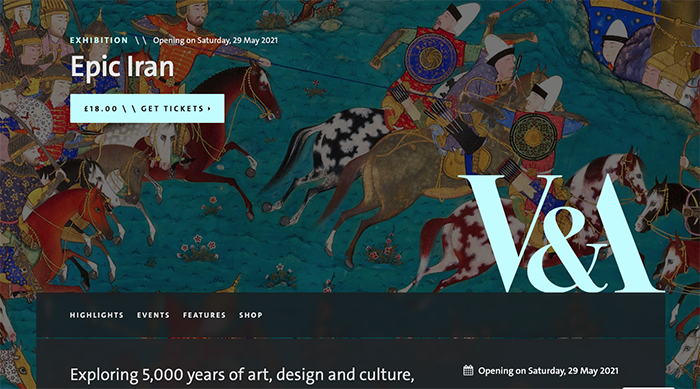
Until September 12, 2021 — Exhibition EPIC IRAN at the Victoria & Albert Museum
The Epic Iran exhibition explores 5,000 years of Persian art, design and culture though sculpture, ceramics and carpets, textiles, photography and film. The historic objects and artworks reflect the Iran’s vibrant historic culture, architectural splendors, the abundance of myth, poetry and tradition, and the evolving, self-renewing art and culture of today. From the Cyrus Cylinder and intricate illuminated manuscripts of the Shahnameh to ten-meter-long paintings of Isfahan tile work, Shirin Neshat’s two-screen video installation Turbulent, and Shirin Aliabadi’s striking photograph of a young woman chewing bubblegum, the exhibition presents an overarching narrative of Iran from 3000 bc.
It covers: the Land of Iran; Emerging Iranstarting in 3200 bc when writing first occurred; The Persian Empireand the Achaemenid period; Last of the Ancient Empires and Alexander the Great; the Book of Kings, on the Shahnameh; Change of Faith, after the Arab conquest in the mid-seventh century ad; Literary Excellenceon poetry, patronage and art; The Old and the New of the Qajar dynasty; and, finally, Modern and Contemporary Iran, which charts mid-century modernisms to the present day, with Farhad Moshiri and Shadi Ghadirian, among other artists.
Epic Iran was organized by the V&A with the Iran Heritage Foundation, in association with the Sarikhani Collection.
RSVP here.
Through 26 September — Divas: D’Oum Kalthoum à Dalida at the Institut du Monde Arab, Paris
Showcasing an eclectic selection of music arranged in sequences of unforeseen sonic analogies, this collective mix was put together by Basma, who is of Nubian Sudanese descent and is based in London. She hosts the Khartoum Arrivals show on NTS Radio where she likes to tap into memories tied to old Sudanese love songs.
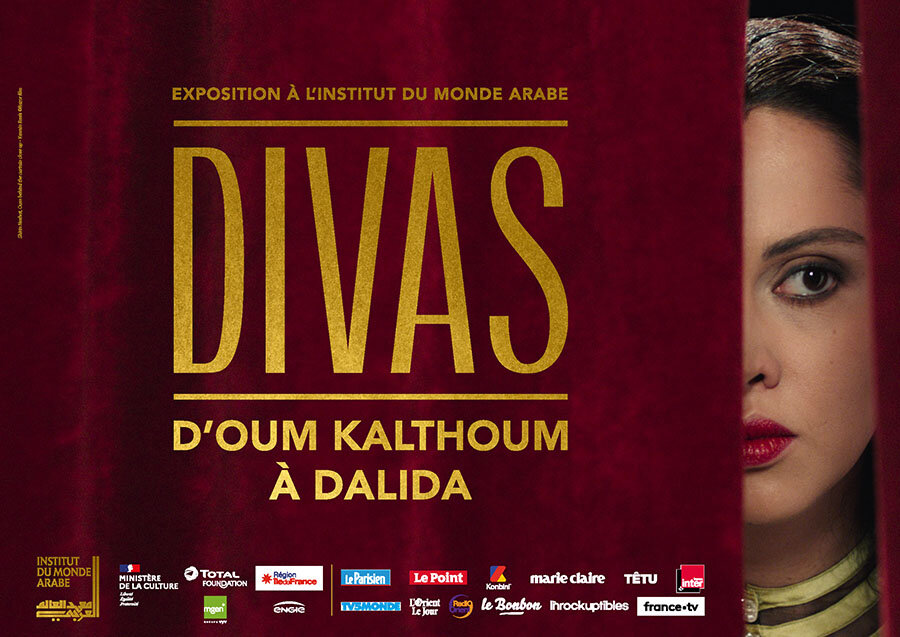
Listen to MARSM mixtapes for free on SoundCloud.
For decades, her voice sang the soundtrack to millions of lives across the Middle East. Now the Institut du Monde Arabe celebrates the stage and silver screen heritage of Umm Kulthum and other Arab chanteuses with an exhibition appropriately called Divas: D’Oum Kalthoum à Dalida.
Opening on 19 May and lasting till 26 September, Divas already features several tempting amuses bouches in the form of short videos on YouTube, with such alluring titles (in English translation) as Militant Divas and Pioneers of Arab Feminism. The website also comes replete with evocative film posters, going back to 1927 with Behidja Hafez in Laila bint al-sahara [Laila, la fille du desert].
These divas were no shrinking violets or hapless sex objects: Hafez, for instance, was Laila’s central character, director and co-producer. Tahiyya Carioca, the occasionally risqué artiste of 1930s films, was also, we learn, an ardent communist, who spent three months in prison after Gamel Abdul Nasser took power. Dalida, a former Miss Egypt in her leopard-skin bikinis, later highlighted social inequities in her many films; while Hoda Chaaraoui founded a salon in 1908 that championed free thought and female emancipation.
For her part, Samia Gamal created a new dance form blended from Arab, classical Western and Latin American styles, and appeared in a bewildering 50 films during the 1940s and 1950s. Asmahan, daughter of a Druze princess, not only possessed an unparalleled voice but also risked her life spying for the Allies in World War II. Warda began singing cabaret in Paris, but soon was moving millions with paeons to the Algerian revolution and donated concert takings to the anti-colonialist FLN militia.
Equally defiant of conservative norms, Layla Mourad – born Lillian Zaki Mourad Mordechai to a Jewish family – debuted at 15 in the 1932 film, Al-Dahaaya (The Victims). She charmed a generation of cinema-goers with her singing and comedic acting, and even ousted Umm Kulthum as “voice of the revolution” in 1953… until jealous rivals called her an Israeli spy.
While top Egyptian military figures quashed the rumors, she never reached the heights of the contralto, Umm Kulthum. The “Voice of Egypt” transformed the soundscape of popular Arab music with performances that often lasted for more than an hour per song. In 1975 her funeral brought some four million mourners onto the streets of Cairo. Unwilling to let her go, Egyptians to this day throng to concerts where she “appears” in hologram form.
Divas will charm viewers with its evocation of a golden age in modern Arabic culture. But there is more to the exhibition than nostalgic indulgence. Rather, it reminds one that even a century ago, powerful Arab women offered a sense of individualism, and a vision of hope, to a troubled region.



